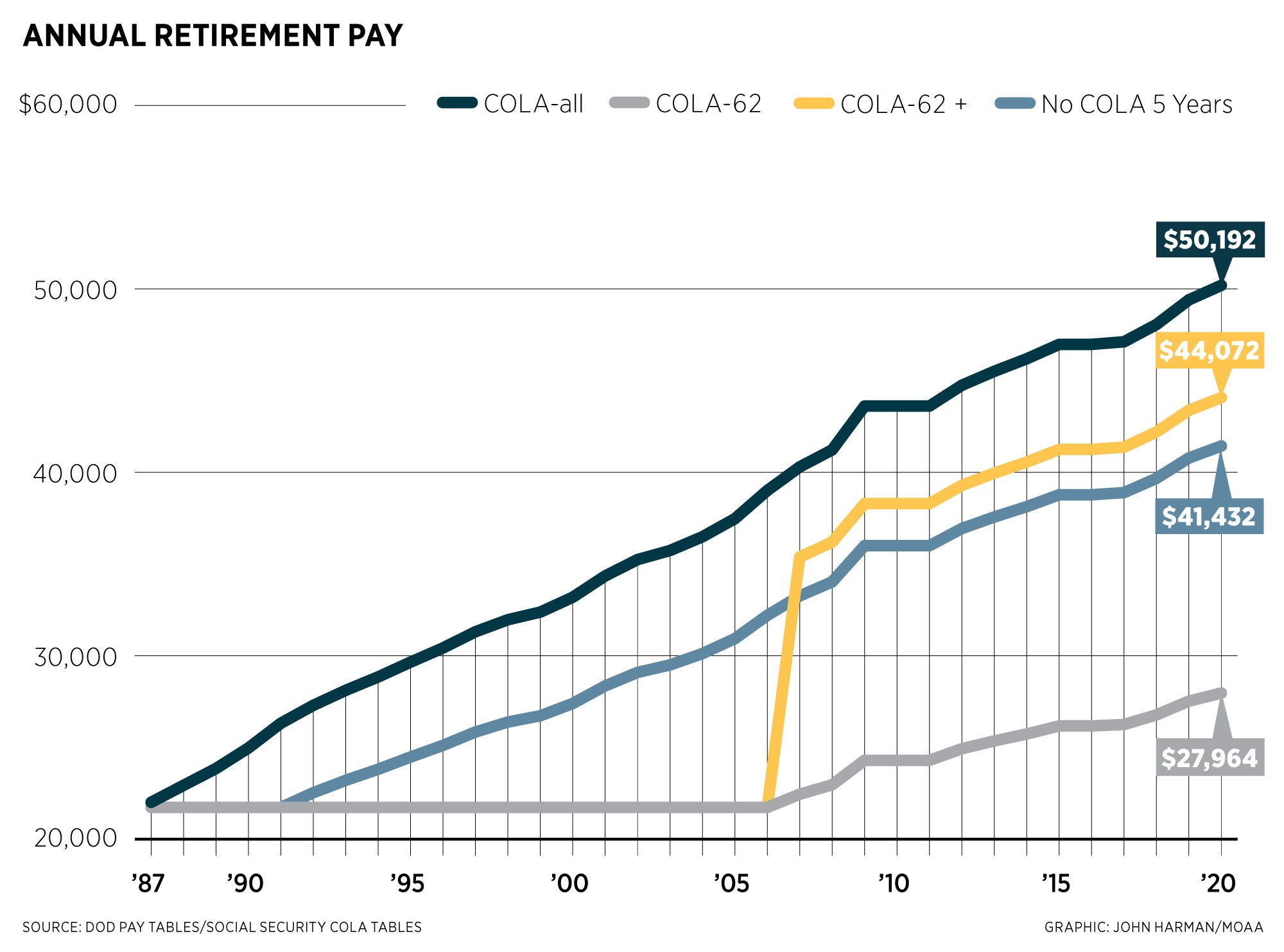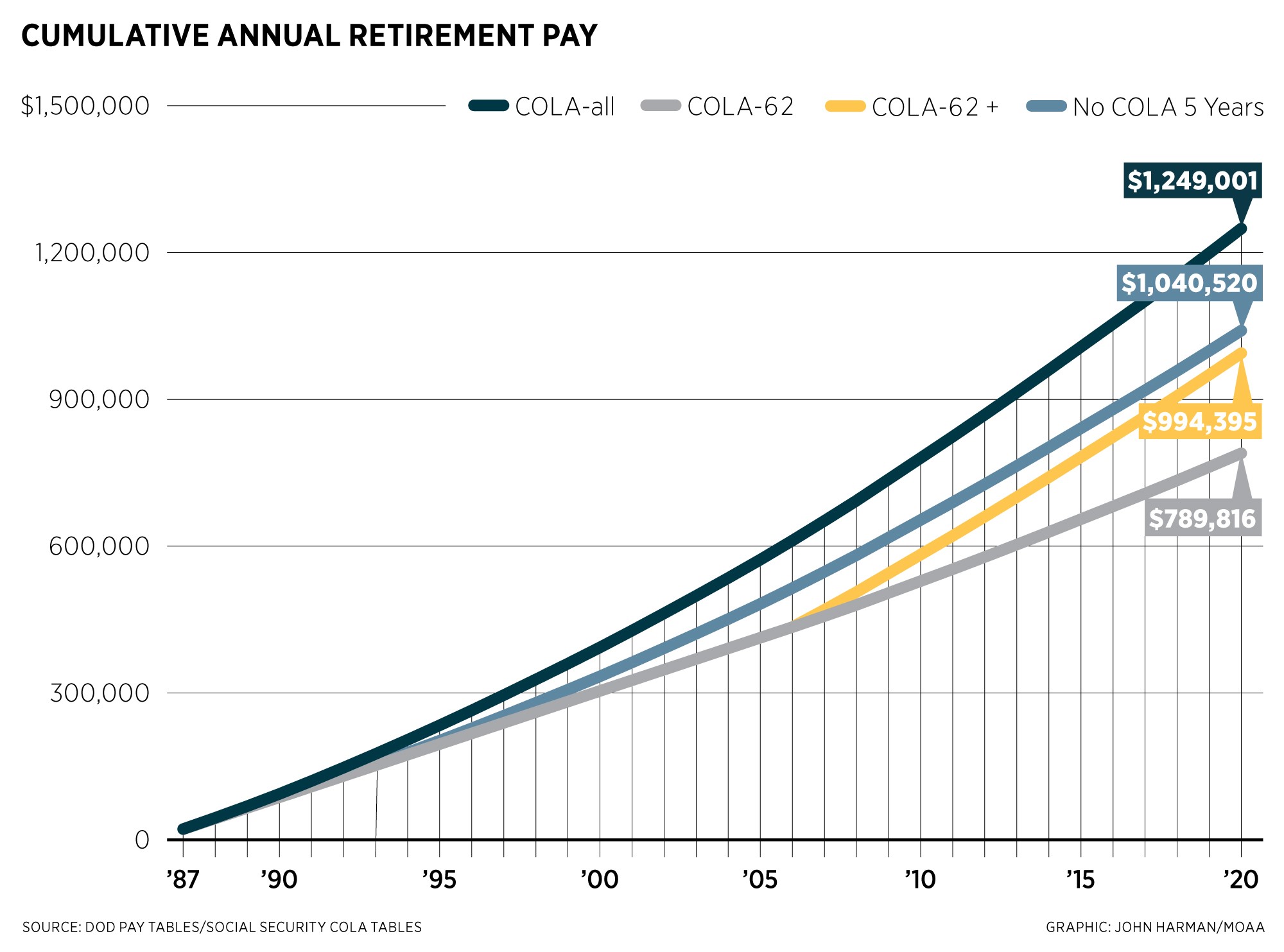Your cost-of-living adjustment of 5.9% is the largest in decades, and as that figure rises, the potential for Congress to leverage COLA reductions in your earned benefit to pay for other programs grows alongside it.
MOAA kept its members informed throughout the process, not just with monthly COLA Watch updates but related reading on inflation and the hard-fought history of the current COLA system. But in real numbers, what could a change to the system mean to your bank account – not just this year or next, but in the coming decades?
Let’s map out four scenarios, all with roots in COLA history:
- COLA All: COLA as prescribed in law, no decrements – this charts the current system, made possible by a 1986 victory by The Military Coalition, a group formed in response to the 1985 COLA crisis and co-founded by The Retired Officers Association, which became MOAA in 2003.
- No COLA for 5 years (1987-1991): What would’ve taken place had the Gramm-Rudman-Hollings Act, otherwise known as 1985 Balanced Budget and Emergency Deficit Control Act, remained on the books.
- COLA-62+: This plan would’ve eliminated COLA until age 62, reinstating the adjustment from 62 forward with the addition of cumulative COLA percentages (but no back pay). This setup was recommended in a 2010 report by the National Commission on Fiscal Responsibility and Reform, a group of experts tasked by President Barack Obama to improve the nation’s fiscal situation.
- COLA-62: Like the above plan, this setup would eliminate COLA until age 62, but with no adding back of cumulative COLA percentages – simply a restarted COLA. This was one of several COLA reductions considered by the George H.W Bush Administration in the early 1990s, per a January 2004 Congressional Research Service Report (Page CRS-6).
Many factors affect retirement pay, so it’s difficult to represent every retiree’s compensation in a single chart. But if we use the scenario of an O-5 retiring in 1987 after 20 years of service, plotting the impact over 34 years to the present day with actual Consumer Price Index (CPI) and COLA data through 2020, we get this yearly breakdown:

But that chart doesn’t tell the whole story. The cumulative impact of these decrements is startling. Here’s what they’d look like between 1987 and 2020:

(Charts didn't load? Click here: Yearly | Cumulative)
From the case described above, the work of MOAA and the coalition stopping the planned 1985 changes saved this retiree over $200,000 over 34 years. Plans in play since then could’ve cost retirees even more money – you can see what the damage would’ve looked like for the past few decades, but with rising inflation, it’d be worse in future years.
How can you join the fight? Stay tuned to MOAA.org and your newsletter for updates and potential calls to action, as MOAA continues its work with TMC to ensure all of our eight uniformed services continue to receive COLA increases per current legislation.

